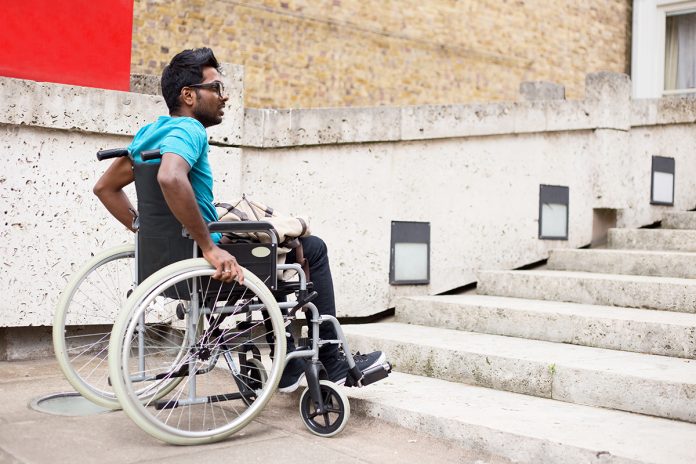Ian Streets, managing director of About Access, takes a lockdown look at the lack of progress over the last 10 years
Old films, football matches from years ago, books that you forgot you owned: we’ve been making the most of the liberty provided by lockdown to look back at how things used to be and, in most cases, to appreciate how they have changed for the better. Sadly, in browsing an accessibility pamphlet from 2010, it became clear from the outset that some key aspects of the built environment have hardly changed at all.
The question posed in one particular article was why, despite legislation and regulations designed to make the built environment accessible to disabled people, did so many inaccessible places still exist?
Concern was expressed that access professionals routinely find their comments were not listened to, people tried to bypass them, decent access was seen as an added extra for a project.
There was evidence that design standards were not being used, with one reason being the view that access restricts design and another being that “form follows function” – the concept that as long as something works, a designer can do what they like.
But the view of the access professional is that the critical function of a building or object is that it can be used by everybody.
Access for everybody
Designers always work within given criteria. Emergency evacuation, sound testing, aesthetics – access should be on the list as part of the function of a building. Accepting that should be easy – you wouldn’t deliberately deny access by placing the front door to a property 10 feet up a wall!
Advocates of form over function can also be prone to trying to fix things that aren’t broken. We welcomed an idea we came across to review the design guidelines for some signage. It’s good for people to review their design guidelines, but in doing that you need to make sure you cover the accessibility requirements properly.
In this particular instance, they came up with “solutions” that weren’t needed and were no longer accessible. Times change and requirements change but some things were right first time round, can’t sensibly be improved upon and are better left alone. It’s important to bear this in mind and to be alert to such scenarios, giving you more time to focus on fixing the things that need fixing.
The article also stated that many people think it’s over the top to enable access for disabled people, and it recalled a bizarre suggestion that the top floor of a two-storey pet shop didn’t need to be accessible because everything for cats and dogs was on the ground floor and disabled people didn’t own any other animals.
The writer acknowledged that sometimes the problem is with the client, who requires compromises to be made because access was not considered at the start of a scheme.
Accessible WCs
Our own experience has included reviewing work at an academic building where work was carried out to provide single-sex toilets on the ground floor and a changing places facility, but without an accessible WC for independent use.
Some designers are mistaken in thinking that an adult changing places facility suits everybody, but it doesn’t because if it’s for assisted use only it’s not suitable for independent use. Different users have different requirements, and an accessible WC should have been put in at the same time as the other facilities.
The article asserted that one of the reasons problems arose was because the safeguards to prevent them were not strong enough. It concluded that the perceived risks of breaching regulations or ignoring guidance was not high enough.
It noted that the control of new build was “fairly robust” but that houses were being built everywhere without level access because the risk of bypassing the control was considered to be negligible and the requirement could drop off the designer’s radar even if it was there in the first place.
Building Control Approved Inspectors
It’s certainly our experience that Building Control Approved Inspectors don’t always act forcefully enough and when things do go wrong penalties are rarely enforced. In planning, it’s not often that planning law intervenes with a requirement for a developer to remedy errors in their work.
In one local plan, there is a requirement that any new housing development should provide 25% to meet Building Regulation M42. One problem is the drawings may meet that requirement but once on-site, it’s discovered there’s not enough space to stick to it by providing ramps and other essential features.
By then it’s considered too late to do anything about the error and the developers tend to get away with it. In reviewing the plans, they should think about the practicalities of the site.
The article suggests the points were a start to “hopefully move towards challenging aspects of perception and process currently being used that create barriers to inclusivity”.
That journey continues, and for an idea of how far we still have to go just think about the number of design, construction and property professionals who still refer to the “DDA”, which was replaced by the Equality Act in 2010.
Ian Streets advises public and private sector bodies and businesses on accessibility legislation, issues and best practice.
About Access Ltd, 63 Wilson St, Anlaby,
Hull, East Yorkshire, HU10 7AJ.
Ian Streets
Managing Director
Tel: +44 (0)1482 651101
Please note: this is a commercial profile.

















